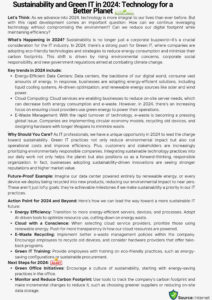
In today’s fast-paced business landscape, staying competitive requires more than just hard work—it
requires smart work. Enter automation software, the game-changer in streamlining operations, enhancing productivity, and maximizing efficiency like never before.
We delve into the world of automation software, exploring its myriad applications across industries, from manufacturing to finance, and beyond. Discover how automation tools empower businesses to automate repetitive tasks, eliminate errors, and free up valuable human resources for more strategic endeavors.
From robotic process automation (RPA) to workflow management systems, we’ll explore the d
iverse array of automation solutions available, each tailored to specific business needs. Learn how these software tools integrate seamlessly with existing systems, providing a cohesive and synergistic approach to operations management.
Moreover, we’ll uncover the transformative impact of automation on workforce dynamics, debunking fears of job displacement and highlighting the opportunities for upskilling and redeployment. Embracing automation isn’t just about cutting costs—it’s about unlocking the full potential of human capital in a digitized world.
—
Introduction
In the dynamic landscape of modern business, the pursuit of efficiency has become paramount. With competition intensifying and consumer expectations evolving, organizations must continuously seek ways to streamline their operations, optimize processes, and enhance productivity. In this pursuit, automation software emerges as a pivotal tool, offering businesses the means to revolutionize their operations and stay ahead in a rapidly changing environment.
The Evolution of Automation Software
The concept of automation is not new, but its evolution into sophisticated software solutions has transformed the way businesses operate. Initially limited to basic tasks and processes, automation software has undergone significant advancements, leveraging technologies such as artificial intelligence (AI), machine learning, and robotic process automation (RPA) to achieve unprecedented levels of efficiency and accuracy.
Applications Across Industries
The versatility of automation software is reflected in its wide-ranging applications across various industries. In manufacturing, for example, automation technologies have revolutionized production processes, increasing output, reducing costs, and enhancing quality control. Similarly, in the financial sector, automation tools have streamlined transaction processing, risk management, and compliance, enabling financial institutions to operate more efficiently and securely.
Key Features and Functionality
Automation software encompasses a diverse range of tools and platforms, each offering unique features and functionality tailored to specific business needs. Workflow management systems, for instance, enable organizations to automate and optimize complex business processes, from procurement and inventory management to customer service and order fulfillment. Meanwhile, RPA software allows for the automation of repetitive, rule-based tasks, freeing up human resources for more strategic activities.
Integration and Interoperability
One of the strengths of automation software lies in its ability to integrate seamlessly with existing systems and technologies. Whether it’s enterprise resource planning (ERP) software, customer relationship management (CRM) systems, or data analytics platforms, automation tools can be seamlessly integrated into the organizational ecosystem, enabling data sharing, process synchronization, and cross-functional collaboration.
The Human Element: Empowering the Workforce
Contrary to common misconceptions, automation is not about replacing humans with machines; rather, it’s about augmenting human capabilities and empowering employees to focus on high-value tasks that require creativity, critical thinking, and problem-solving skills. By automating mundane and repetitive tasks, automation software liberates employees from tedious work, allowing them to contribute more meaningfully to the organization’s goals and objectives.
Overcoming Challenges and Resistance
While the benefits of automation software are undeniable, its adoption is not without challenges. Resistance to change, concerns about job displacement, and implementation complexities are among the hurdles that organizations may encounter on their automation journey. However, with proper planning, stakeholder engagement, and change management strategies, these challenges can be overcome, paving the way for successful implementation and adoption.
The Future of Automation
As technology continues to advance and business environments evolve, the future of automation software looks promising. Innovations such as cognitive automation, predictive analytics, and autonomous systems hold the potential to further enhance efficiency, agility, and competitiveness across industries. Moreover, as the Internet of Things (IoT) proliferates and connectivity becomes ubiquitous, automation software will play an increasingly integral role in orchestrating interconnected ecosystems of devices, sensors, and applications.
Conclusion
In conclusion, automation software represents a paradigm shift in the way businesses operate, offering unprecedented opportunities to streamline processes, enhance productivity, and drive innovation. By harnessing the power of automation, organizations can not only stay competitive in today’s fast-paced environment but also unlock new levels of efficiency and effectiveness. As we embrace the era of digital transformation, automation software stands as a beacon of progress, empowering businesses to thrive in an increasingly complex and interconnected world.






